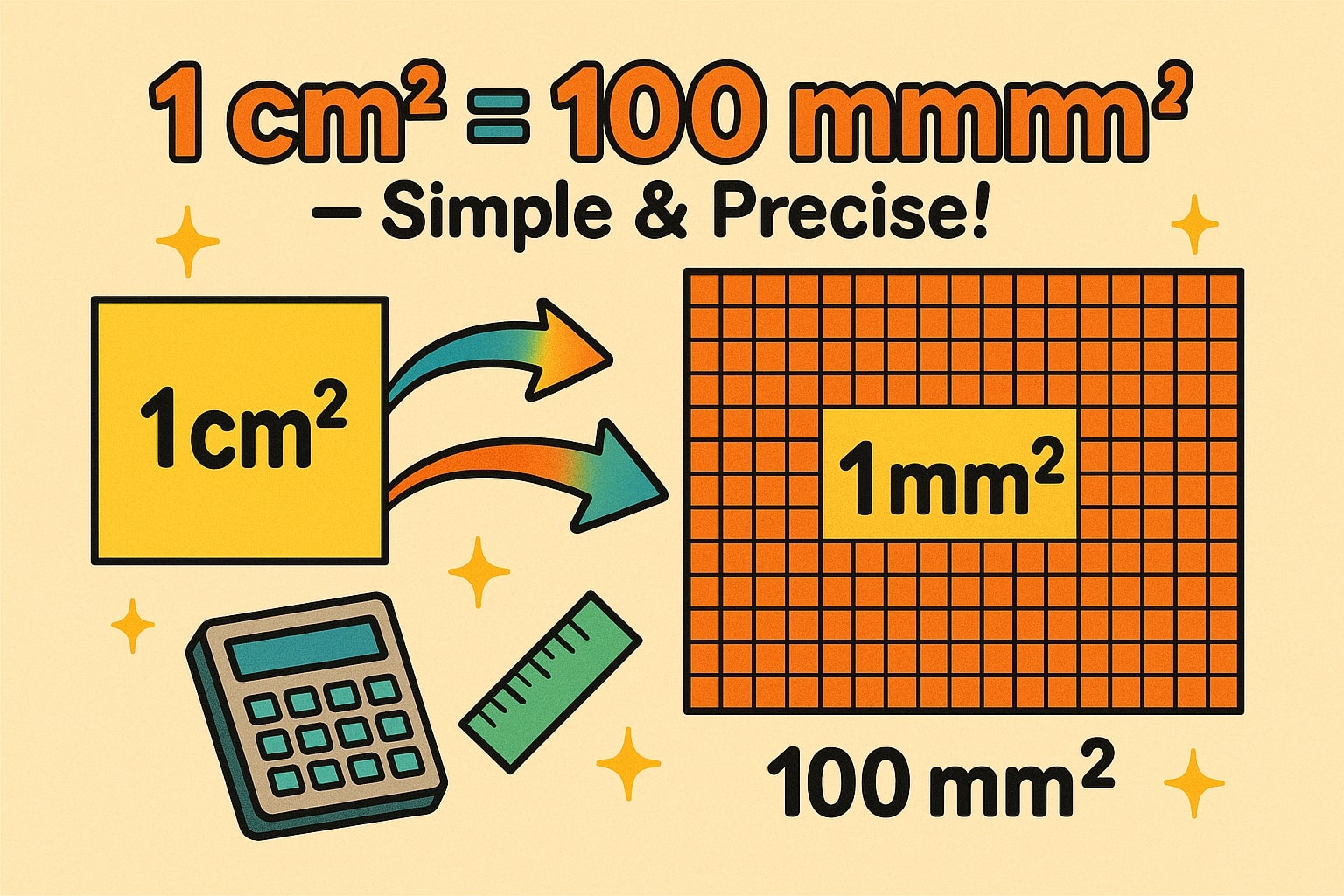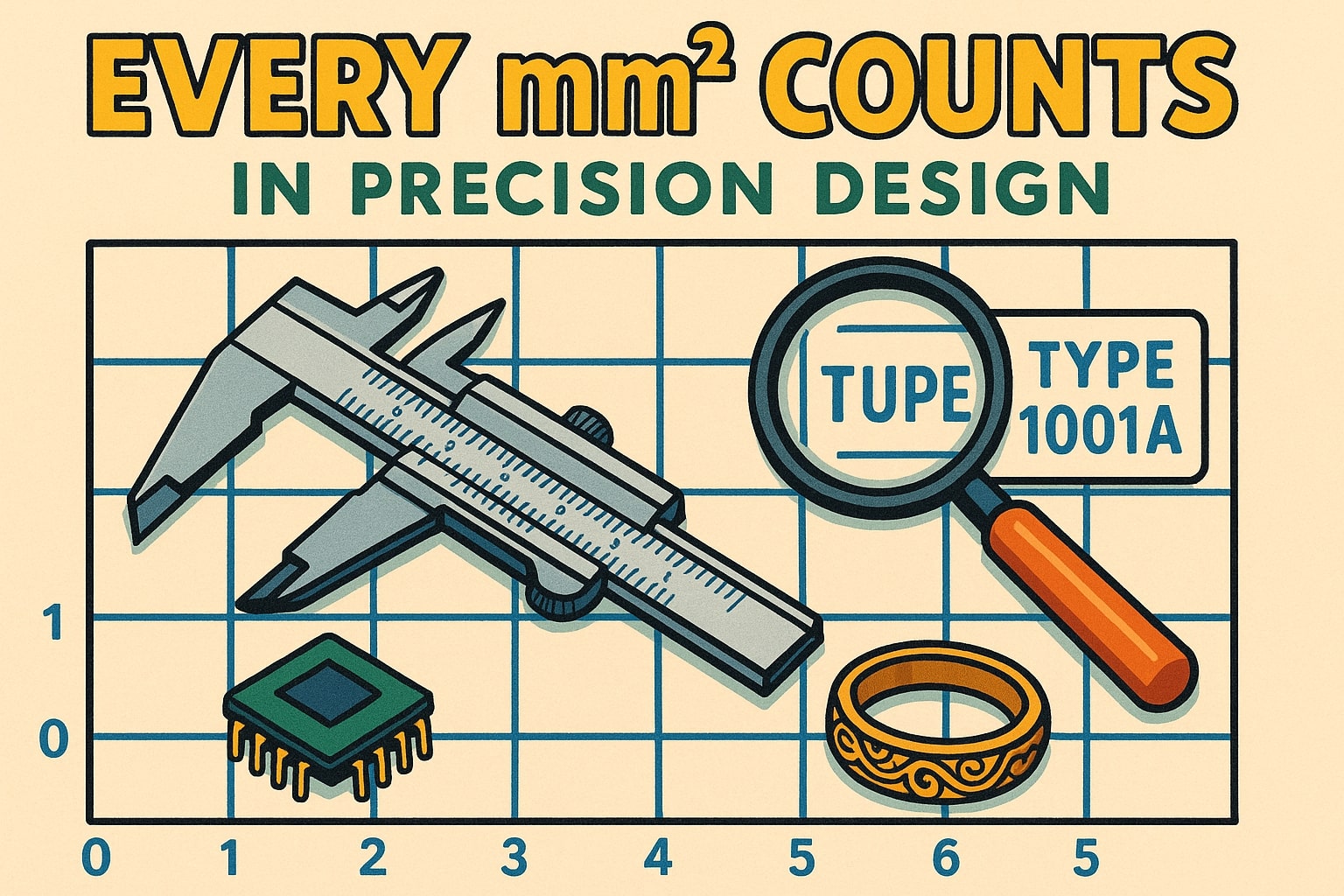square centimeter to square millimeter – How to convert cm² to mm²
When dealing with precise measurements — especially in printing, engineering, or small-scale design — area units like square centimeters (cm²) and square millimeters (mm²) come into play. While they both belong to the metric system, knowing how to switch between them is essential when accuracy matters.
Luckily, converting from cm² to mm² is straightforward and based on the relationship between centimeters and millimeters.

Here’s how it works:
1 centimeter = 10 millimeters
So:
1 cm² = 10 mm × 10 mm = 100 mm²
Formula:
square millimeter = square centimeter × 100
Example:
Let’s say you’re designing a watch face with a surface area of 24 cm². To convert that to square millimeters:
square millimeter = 24 × 100 = 2,400 mm²
So, 24 cm² equals 2,400 mm² — a unit that’s more usable when designing parts, cutting materials, or working with precision tools.
For instant conversions, check out our Area Converter or explore more units in our Conversion tools collection.
Did you know?
-
The square millimeter is often used in technical drawings and engineering blueprints for ultra-precise surface details.
-
In microelectronics, chip surface areas are often described in mm², where even 1 mm² difference can affect performance.
-
A standard postage stamp has an area of roughly 400 to 500 mm², depending on the design.
-
In medical devices like stents or implants, surface area in mm² affects contact with tissue and fluid dynamics.
-
The cm² to mm² conversion is frequently used in laser cutting and CNC machining, where detailed cuts require small unit control.
Where detail matters: precision design and surface control
In fields where space is limited — think circuit board layout, label printing, or jewelry design — working in square centimeters just isn’t precise enough. That’s where square millimeters become the go-to. Whether you're laying out components in a tiny housing or determining how much surface to coat or engrave, every mm² matters.
Even in high-volume manufacturing, like packaging or micro-assembly, area tolerances are measured in mm² to ensure uniform results. So while a label might be designed in cm² for readability, the actual production spec sheet will often detail dimensions down to mm² for accuracy and quality control.

From centimeter scale to millimeter precision
When working with small surfaces or compact layouts, the formula is simple:
square millimeter = square centimeter × 100
This quick conversion helps you zoom in on the details — and ensures your work meets the standards of fields where even a fraction of a centimeter makes a difference.
Need more unit clarity? Try the Area Converter or browse through our Conversion tools to keep every project sharp, accurate, and on-spec.

